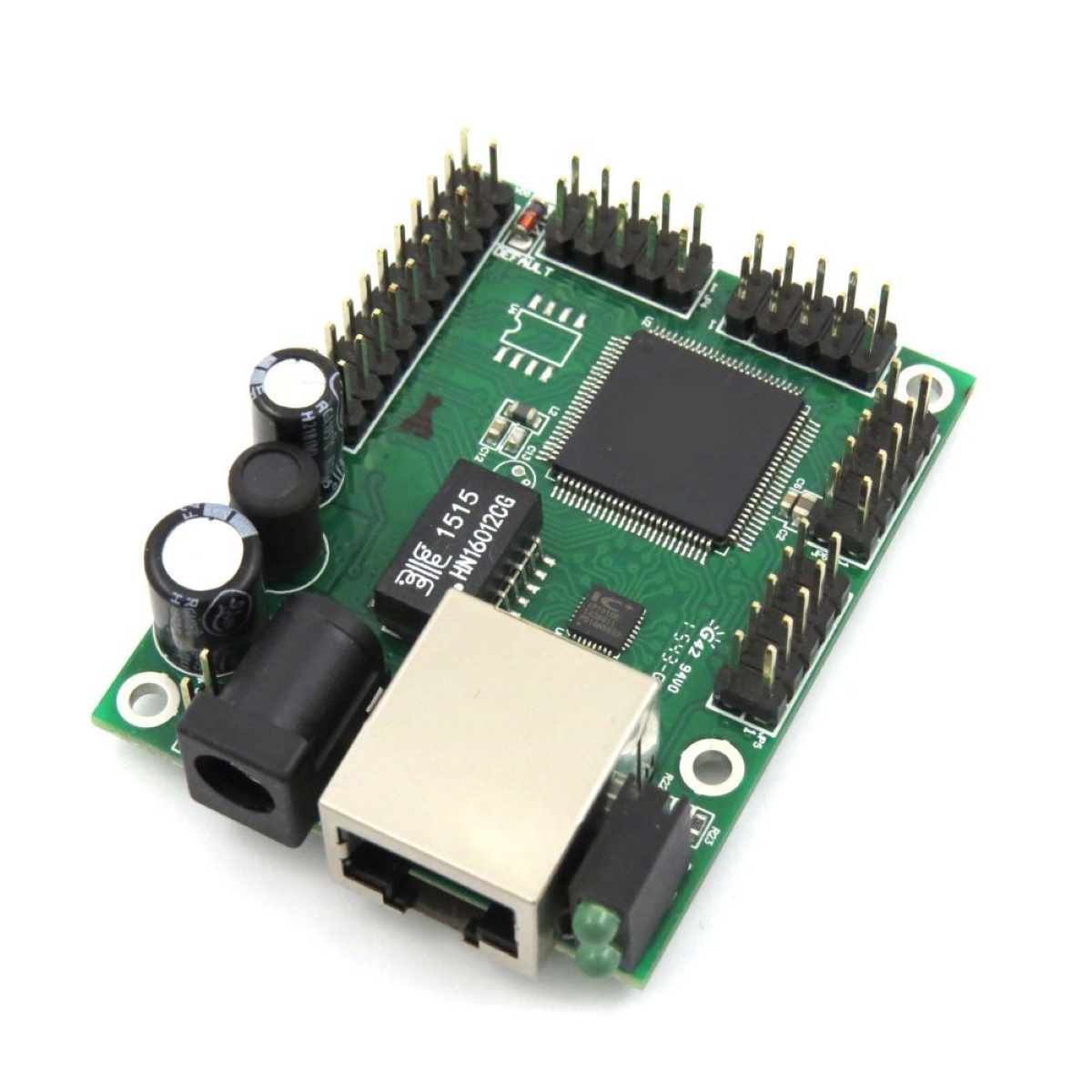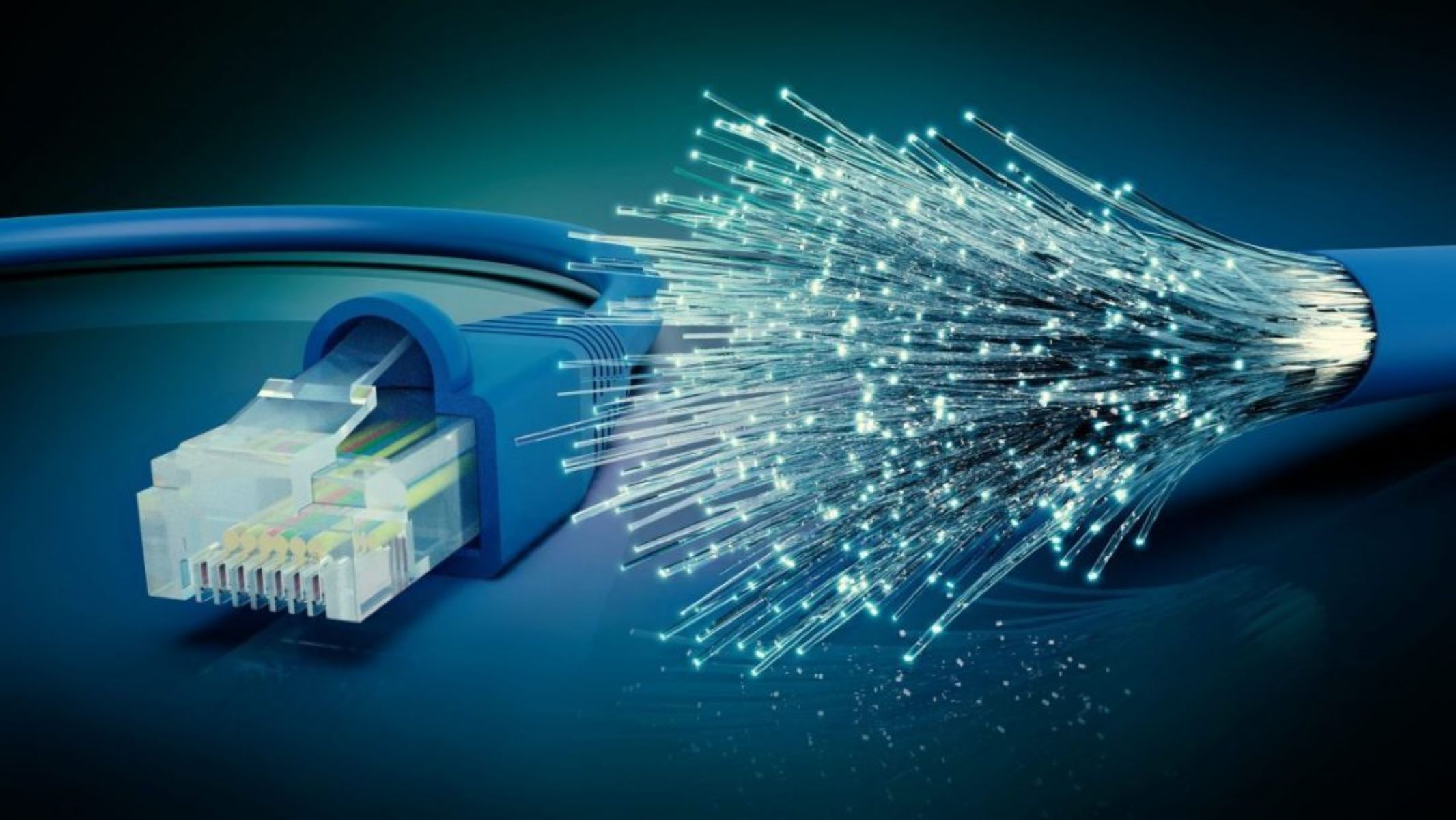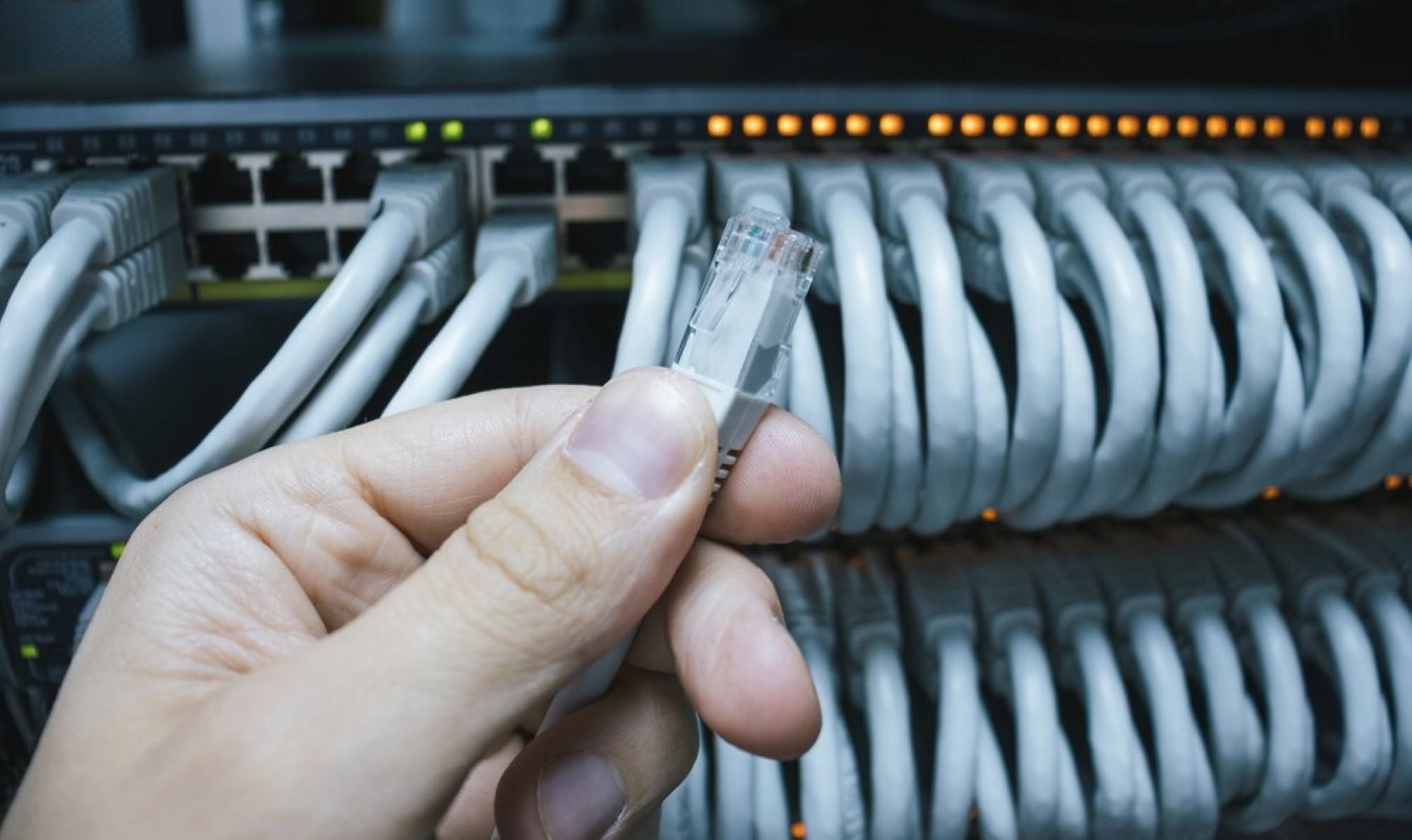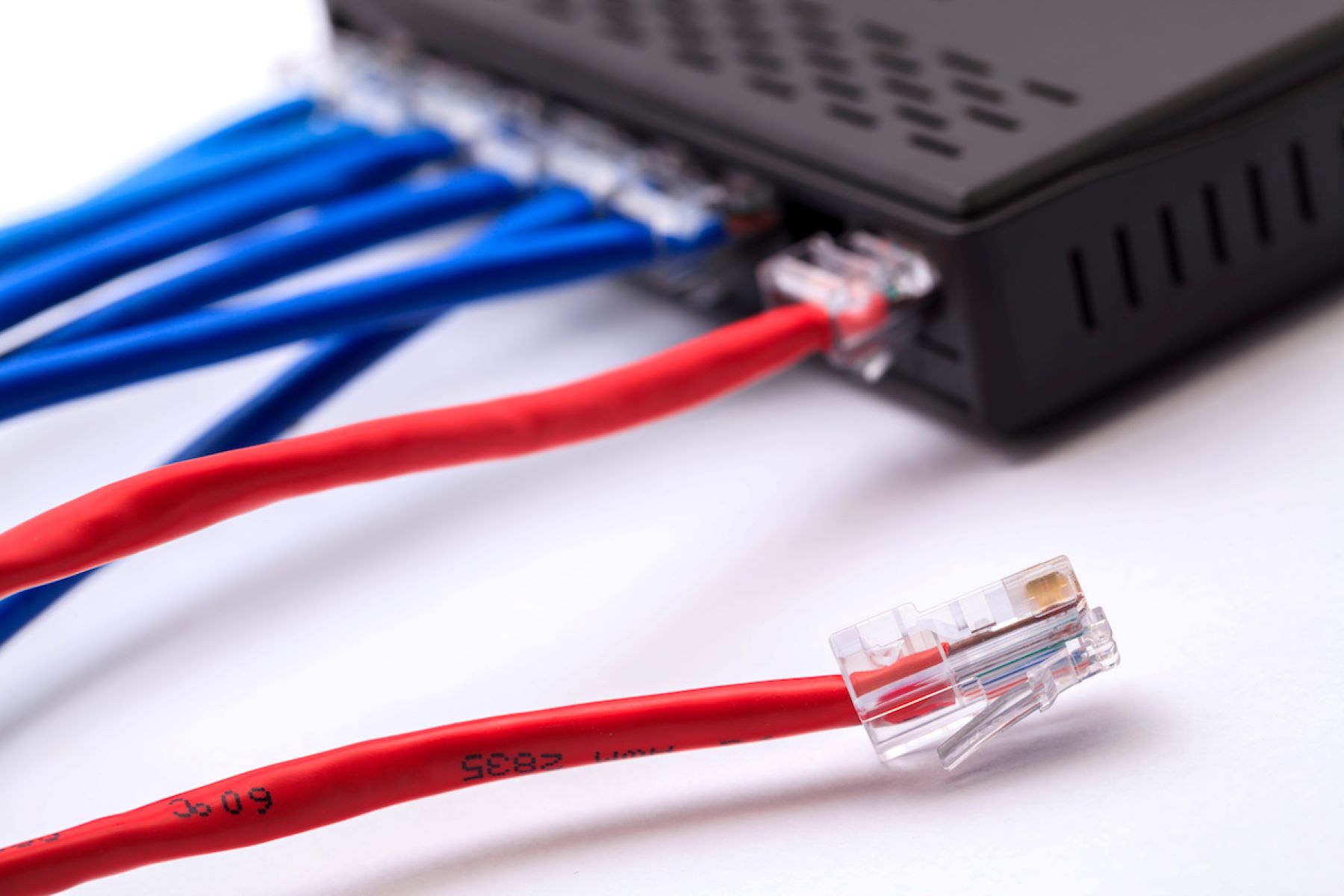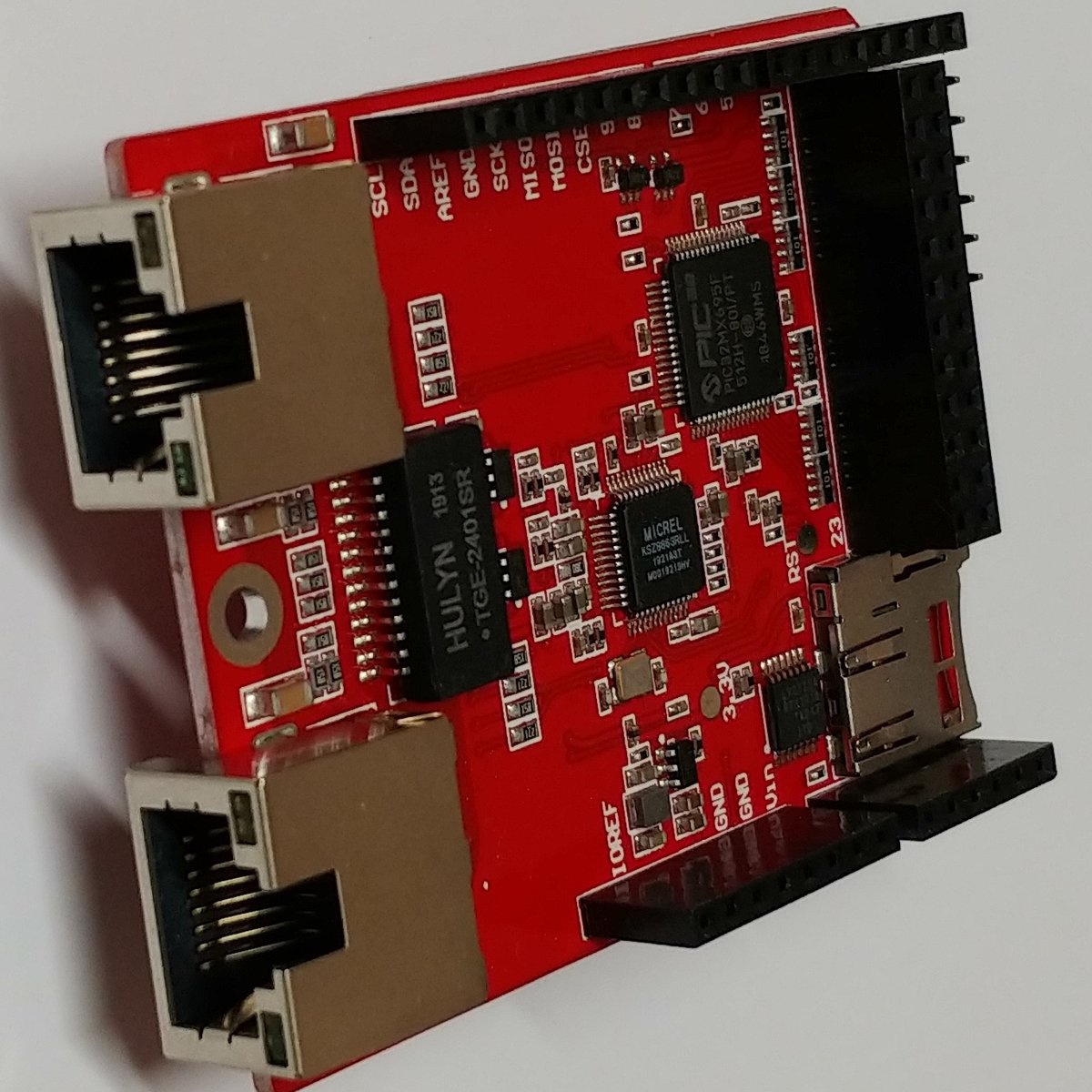Introduction
Welcome to the world of Ethernet controllers! If you’ve ever wondered how devices in a computer network communicate with each other, then you’re in the right place. Ethernet controllers play a crucial role in connecting devices and facilitating smooth and efficient data transfer. In this article, we will explore the ins and outs of Ethernet controllers, how they work, their types, benefits, and common applications.
An Ethernet controller, also known as a network interface controller or a network adapter, is a hardware component that enables a device to connect to a computer network. It acts as a bridge between the device and the network, allowing for the transmission and reception of data packets. In simpler terms, it’s the brain behind network connectivity, ensuring devices can send and receive information.
How does it all work? Well, Ethernet controllers rely on a networking standard called Ethernet, which defines the rules and protocols for data transmission over a network. These controllers encapsulate data into packets and send them across the network using various techniques like routing and switching. Designed to be compatible with different network types, Ethernet controllers ensure seamless communication between devices regardless of their manufacturers or models.
There are different types of Ethernet controllers available, each catering to specific networking needs. Some common variations include integrated controllers, which are built-in on the motherboard of a computer, and standalone controllers that can be added externally via expansion slots or USB connections. Each type has its advantages and limitations, making it important to choose the right Ethernet controller based on your requirements.
So, why are Ethernet controllers so important? For starters, they are the backbone of modern computer networks and enable connectivity among devices, such as computers, servers, printers, and more. With the rise of the internet of things (IoT) and the increasing number of devices connected to networks, having reliable and efficient Ethernet controllers is crucial for smooth data transfer and reliable communication.
In the next sections, we will delve deeper into the working principles of Ethernet controllers, explore the different types available, discover their benefits, and uncover their common applications. So, sit tight and get ready to explore the fascinating world of Ethernet controllers!
What is an Ethernet Controller?
An Ethernet controller, also known as a network interface controller (NIC) or a network adapter, is a hardware component that enables a device to connect to a computer network. It serves as the intermediary between the device and the network, facilitating the transmission and reception of data packets.
At its core, an Ethernet controller is responsible for converting digital data from the device into a format that can be transmitted over an Ethernet network. It encapsulates the data into packets, attaching necessary information such as source and destination addresses, error correction codes, and control information. These packets are then sent across the network using various networking protocols such as TCP/IP.
Ethernet controllers communicate with the device it is connected to via a bus or direct connection, depending on the type of controller. They receive data from the device, process it if necessary, and encapsulate it into packets before sending it out to the network. Similarly, they receive incoming packets from the network, extract the data, and deliver it to the device. This bidirectional communication allows for seamless data transmission between the device and the network.
There are different types of Ethernet controllers available, ranging from integrated controllers to standalone adapters. Integrated controllers are built directly into the motherboard of a computer, while standalone controllers can be added externally through expansion slots or USB connections. Additionally, there are wireless Ethernet controllers that enable devices to connect to networks wirelessly, eliminating the need for physical cables.
Ethernet controllers are a fundamental component of modern computer networks, enabling devices to communicate and share data efficiently. They play a crucial role in ensuring reliable and high-speed network connectivity, which is essential for various applications such as internet browsing, file sharing, video streaming, online gaming, and more.
Ultimately, Ethernet controllers act as the bridge between devices and computer networks, allowing for seamless communication and data transfer. They are essential for both home and enterprise networks, enabling devices to connect, collaborate, and access resources effectively. The continuous advancements in Ethernet technology have led to faster and more efficient controllers, pushing the boundaries of network performance and enabling new possibilities for the future.
How does an Ethernet Controller work?
An Ethernet controller functions as the key interface between a device and the Ethernet network. It operates by following the Ethernet networking standard, which outlines the rules and protocols for data transmission over a network.
The Ethernet controller works in conjunction with the device’s operating system and network stack. When data needs to be sent from the device to the network, the controller encapsulates the data into packets. It attaches necessary information to the packets, including the source and destination addresses, error correction codes, and control information.
In order to transmit the packets across the network, the Ethernet controller employs techniques like routing and switching. Routing involves determining the optimal path for the packets to reach their destination, ensuring efficient data transfer. Switching, on the other hand, is used for local network communication, where the controller forwards packets directly to the intended recipient device based on the destination address.
When the device receives incoming packets from the network, the Ethernet controller extracts the data and delivers it to the device’s operating system for further processing. It ensures that the packets are directed to the appropriate application or service running on the device, based on the destination port number specified in the packets.
Ethernet controllers use different physical media, such as twisted-pair copper cables or fiber optic cables, to transmit data over the network. These physical connections are determined by the type of Ethernet controller being used and the network infrastructure in place.
Furthermore, modern Ethernet controllers often support advanced features like auto-negotiation and flow control. Auto-negotiation allows the controller to automatically determine the optimal network speed and mode of operation (half-duplex or full-duplex) based on the capabilities of the connected device and the network switch. Flow control mechanisms help regulate the flow of data between the device and the network, preventing data loss or congestion.
Overall, the Ethernet controller serves as the intermediary between the device and the Ethernet network, ensuring seamless data transmission and reception. It processes data, encapsulates it into packets, handles routing or switching, and facilitates reliable communication between the device and the network.
As technology advances, Ethernet controllers continue to evolve, providing faster speeds, improved performance, and enhanced features. They hold a critical role in enabling efficient and reliable connectivity in modern computer networks, supporting various applications and enabling seamless communication among devices.
Types of Ethernet Controllers
Ethernet controllers come in various types, each catering to specific networking needs and device requirements. Understanding the different types can help you choose the right controller for your specific application. Let’s explore some of the common types of Ethernet controllers:
- Integrated Ethernet Controllers: These controllers are built directly into the motherboard of a computer or embedded system. Integrated controllers are commonly found in desktop computers, laptops, and servers. They provide a convenient and compact solution for network connectivity without the need for additional hardware. Integrated controllers often support high speeds and advanced features, making them ideal for demanding network applications.
- Standalone Ethernet Controllers: Standalone controllers are separate network adapters that can be added externally to a device through expansion slots or USB connections. These controllers offer flexibility, allowing you to upgrade or add network connectivity to devices that don’t have built-in Ethernet capabilities. Standalone controllers come in various form factors, such as PCI, PCIe, USB, and PCMCIA, providing compatibility with different systems and devices.
- Wireless Ethernet Controllers: Wireless Ethernet controllers, also known as Wi-Fi adapters or wireless NICs, enable devices to connect to computer networks wirelessly. They use wireless communication protocols, such as Wi-Fi, to establish network connectivity without the need for physical cables. Wireless Ethernet controllers are commonly used in laptops, smartphones, tablets, and other portable devices, providing flexibility and convenience for network access in various environments.
- Gigabit Ethernet Controllers: Gigabit Ethernet controllers support data transfer speeds up to 1000 megabits per second (Mbps), which is ten times faster than Fast Ethernet. These controllers are commonly used in enterprise networks that require high-speed data transfer for bandwidth-intensive applications like video streaming, large file transfers, and data center connectivity. Gigabit Ethernet controllers provide enhanced performance and bandwidth capacity, allowing for efficient network communication.
- 10 Gigabit Ethernet Controllers: 10 Gigabit Ethernet controllers, also known as 10GbE controllers, offer even higher data transfer speeds, up to 10 gigabits per second (Gbps). These controllers are typically used in enterprise data centers, demanding research environments, and high-performance computing applications. 10GbE controllers provide exceptionally fast network connectivity, enabling rapid data transfer and low-latency communication.
Each type of Ethernet controller has its own advantages and limitations, and the choice depends on factors such as network requirements, device compatibility, and performance needs. It’s important to consider these factors and select the appropriate Ethernet controller that best suits your networking needs.
As technology continues to evolve, Ethernet controllers are becoming more advanced, offering faster speeds, improved power efficiency, and enhanced features. Newer standards like 2.5 Gigabit Ethernet and 5 Gigabit Ethernet controllers are also emerging, bridging the gap between Gigabit Ethernet and 10 Gigabit Ethernet speeds.
Understanding the different types of Ethernet controllers empowers you to make informed decisions when it comes to selecting the right controller for your networking requirements. Whether you need integrated connectivity, additional wireless capabilities, or high-speed performance, there’s an Ethernet controller out there to meet your needs.
Benefits of Ethernet Controllers
Ethernet controllers offer numerous benefits that make them essential components in modern computer networks. Let’s explore some of the key advantages of Ethernet controllers:
- Reliable Connectivity: Ethernet controllers provide reliable connectivity between devices and the network. They ensure consistent data transmission and reception, minimizing data loss or network disruptions. This reliability is crucial for applications that require stable connections, such as video conferencing, real-time data streaming, and online gaming.
- High-Speed Performance: Ethernet controllers support fast data transfer speeds, enabling efficient communication between devices. With advancements in technology, controllers now offer Gigabit Ethernet and 10 Gigabit Ethernet speeds, allowing for rapid data exchange and reduced latency. High-speed performance is essential for bandwidth-intensive tasks like large file transfers, multimedia streaming, and data center operations.
- Scalability: Ethernet controllers make it easy to scale network connectivity. With the use of switches and routers, additional devices can be connected to the network seamlessly. This scalability allows for the expansion of network infrastructure to accommodate growing business needs and increasing numbers of devices.
- Compatibility and Interoperability: Ethernet controllers adhere to standardized protocols, ensuring compatibility and interoperability across different devices and network equipment. Whether it’s a computer, printer, server, or other network-enabled devices, Ethernet controllers provide a universal platform for communication, allowing for seamless integration within a network ecosystem.
- Cost-Effective: Ethernet controllers offer a cost-effective solution for network connectivity. They are widely available and come in various price ranges, catering to different budgets. Furthermore, the ubiquity of Ethernet technology makes it cost-effective to implement and maintain a network infrastructure, compared to alternative networking technologies.
- Flexibility: Ethernet controllers provide flexibility in terms of network topologies and media choices. They support various network configurations, including star, bus, and ring topologies. Additionally, Ethernet controllers can use different physical media, such as twisted-pair copper cables or fiber optic cables, depending on the network infrastructure and requirements.
- Security: Ethernet controllers offer built-in security features to protect network communication. They support encryption protocols, access controls, and authentication mechanisms, safeguarding data transmission from unauthorized access or tampering. This security is essential for sensitive information exchange, ensuring the confidentiality and integrity of data.
The benefits of Ethernet controllers contribute to the overall efficiency and effectiveness of computer networks, enabling seamless communication, high-speed data transfer, and reliable connectivity. Whether it’s a small home network or a large enterprise deployment, Ethernet controllers play a crucial role in creating a robust and efficient network infrastructure.
As technology continues to advance, Ethernet controllers will continue to evolve with even higher speeds, improved power efficiency, and enhanced features. These advancements will further enhance network performance and enable new possibilities for applications such as IoT, edge computing, and cloud technologies.
Considering the benefits offered by Ethernet controllers, it’s clear that they are essential components for building and maintaining reliable and high-performing computer networks.
Common Applications of Ethernet Controllers
Ethernet controllers find widespread use in various applications and industries, facilitating reliable and efficient network connectivity. Let’s explore some of the common applications where Ethernet controllers play a crucial role:
- Internet Connectivity: Ethernet controllers are widely used in homes, offices, and public spaces to provide internet connectivity for devices. Whether it’s a computer, smartphone, or smart home devices, Ethernet controllers ensure seamless access to online resources, web browsing, and cloud services.
- Local Area Networks (LANs): Ethernet controllers are fundamental components of local area networks. They enable devices within a limited geographical area, such as an office building, school, or campus, to connect and share resources. LANs powered by Ethernet controllers facilitate efficient communication, file sharing, and collaborative tasks among networked devices.
- Data Centers: Ethernet controllers play a vital role in data centers, responsible for handling massive amounts of data and supporting the infrastructure for cloud computing and storage. They enable high-performance networking within data centers, allowing for rapid data transfers and efficient communication between servers and storage devices.
- Video Streaming and Media Applications: Ethernet controllers are essential for video streaming and media applications that require high bandwidth and reliable connectivity. They ensure smooth playback and fast streaming of high-definition videos, online gaming, and media-rich content.
- VoIP and Video Conferencing: Ethernet controllers facilitate voice over IP (VoIP) services and video conferencing by providing stable network connectivity and low-latency communication. They ensure clear and uninterrupted audio and video streams during virtual meetings and collaboration sessions.
- Industrial Automation: Ethernet controllers are widely used in industrial automation applications, connecting devices such as programmable logic controllers (PLCs), sensors, and actuators. They facilitate real-time data exchange, enabling efficient control and monitoring of industrial processes and machinery.
- Surveillance and Security Systems: Ethernet controllers are employed in surveillance and security systems to connect IP cameras, video recorders, and access control devices. They enable reliable video streaming, remote monitoring, and centralized management of security systems.
- Internet of Things (IoT): Ethernet controllers play a significant role in IoT applications, connecting a multitude of devices that form a network of interconnected smart devices. They enable seamless communication among IoT devices, allowing for data collection, analysis, and control in various domains such as smart homes, smart cities, and industrial IoT.
These are just a few examples of the wide-ranging applications where Ethernet controllers are utilized. Their versatility, reliability, and high-speed capabilities make them integral components in various industries and networking scenarios.
As technology continues to advance, Ethernet controllers will continue to find new applications and play a crucial role in enabling seamless connectivity and efficient communication.
Key Features to Consider in an Ethernet Controller
When selecting an Ethernet controller for your networking needs, there are several key features to consider. These features can greatly impact the performance, compatibility, and functionality of the controller. Let’s explore some of the important features to keep in mind:
- Speed: The speed of an Ethernet controller determines the data transfer rate it can achieve. Consider the required speed based on your network requirements. Common options include Fast Ethernet (100 Mbps), Gigabit Ethernet (1 Gbps), and 10 Gigabit Ethernet (10 Gbps).
- Compatibility: Ensure compatibility between the Ethernet controller and the device it will be connected to. Look for compatibility with the device’s operating system, drivers, and firmware. Additionally, consider compatibility with the network infrastructure, such as switches and routers.
- Interface Type: Ethernet controllers come in different interface types, including PCI, PCIe, USB, and PCMCIA. Choose the interface type that matches the available slots or ports on your device.
- Power Efficiency: Opt for an Ethernet controller that is power-efficient, especially for devices that have limited power capabilities. Power-efficient controllers help minimize energy consumption and extend the battery life of devices like laptops or portable devices.
- Advanced Features: Consider the specific features offered by the Ethernet controller. This may include support for VLAN (Virtual LAN) tagging, Quality of Service (QoS) prioritization, jumbo frames for increased data packet sizes, Wake-on-LAN functionality, or support for advanced network protocols.
- Driver Support: Ensure that the Ethernet controller has driver support for your operating system. Check the manufacturer’s website or documentation to verify compatibility with your specific operating system version.
- Security Features: Look for Ethernet controllers with built-in security features, such as support for encryption protocols (such as SSL or IPsec), MAC address filtering, and VLAN segregation. These features help protect data transmission and ensure network security.
- Expandability: Consider whether the Ethernet controller allows for future expandability, such as the ability to add additional ports or support for link aggregation to increase bandwidth.
- Reliability: Look for Ethernet controllers from reputable manufacturers known for their reliability and quality. Read reviews or seek recommendations to ensure you choose a controller that will perform consistently and withstand heavy network usage.
- Support and Warranty: Check the manufacturer’s support options and warranty terms. Ensure that they provide timely support and offer a reasonable warranty period, giving you peace of mind and assistance in case of any issues.
Considering these key features when choosing an Ethernet controller can help you make an informed decision that aligns with your specific networking requirements. It ensures compatibility, enhances performance, and provides the necessary features for efficient network connectivity.
Remember that the importance of each feature may vary based on your individual needs and the intended application of the Ethernet controller. Take the time to assess your requirements and prioritize the features accordingly to find the perfect Ethernet controller for your networking setup.
Choosing the Right Ethernet Controller
Choosing the right Ethernet controller is crucial for ensuring optimal network performance and compatibility with your devices and networking infrastructure. Here are some tips to help you select the most suitable Ethernet controller:
- Assess your Network Requirements: Determine your network requirements, such as the desired data transfer speed, number of devices to be connected, and the network topology. Understanding your specific needs will guide you in choosing an Ethernet controller that meets those requirements.
- Consider Speed and Bandwidth: Determine the required speed for your network. Consider whether Fast Ethernet (100 Mbps), Gigabit Ethernet (1 Gbps), or 10 Gigabit Ethernet (10 Gbps) is necessary to accommodate the data traffic and bandwidth demands of your network.
- Check Device Compatibility: Ensure compatibility between the Ethernet controller and the devices it will be connected to. Verify that the controller has driver support for your operating system and that it is compatible with the device’s interface type (PCI, PCIe, USB, etc.).
- Evaluate Advanced Features: Assess the advanced features offered by Ethernet controllers, such as VLAN tagging, QoS prioritization, or Wake-on-LAN functionality. Determine which features are essential for your specific network requirements.
- Consider Power Efficiency: If power efficiency is a concern, choose an Ethernet controller that is designed to consume less power. This is particularly important for devices with limited power capabilities, such as laptops or embedded systems.
- Research Brands and Read Reviews: Research reputable brands and read reviews from other users to assess the reliability and performance of Ethernet controllers. Choosing a reliable brand with positive customer feedback can help ensure a quality product with good support.
- Check for Security Features: Consider Ethernet controllers that offer built-in security features like encryption protocols or MAC address filtering, especially if network security is a priority for your organization.
- Consider Expandability: If scalability or future expandability is important, opt for Ethernet controllers with options to add additional ports or support for link aggregation. Such features allow for expanding the network in the future without requiring a complete overhaul.
- Review Support and Warranty: Verify the support options and warranty terms provided by the manufacturer. Ensure that they offer adequate support resources and a reasonable warranty period to address any potential issues that may arise.
By carefully considering these factors, you can choose an Ethernet controller that matches your specific networking requirements, ensuring seamless connectivity, reliable performance, and compatibility with your devices and network infrastructure.
Remember to prioritize your key requirements and thoroughly research different options available in the market. Compare prices, features, and reviews to make an informed decision that aligns with your network needs.
Choosing the right Ethernet controller ensures a robust and reliable network infrastructure, enabling efficient data transfer, smooth communication, and seamless connectivity for your devices.
Conclusion
Ethernet controllers are essential components in modern computer networks, providing the vital link between devices and the network. They enable seamless communication, reliable connectivity, and efficient data transfer, contributing to the overall performance and functionality of the network.
In this article, we have explored the world of Ethernet controllers, understanding their role, how they work, the types available, their benefits, common applications, and key features to consider. Ethernet controllers are the backbone of network connectivity, facilitating reliable and high-speed data transfer for various applications.
Whether it’s establishing internet connectivity, creating local area networks, powering data centers, enabling video streaming, or supporting industrial automation, Ethernet controllers play a significant role in countless industries and applications. They provide the necessary connectivity for devices to communicate, collaborate, and access network resources efficiently.
When choosing an Ethernet controller, it’s crucial to consider factors such as speed, compatibility, advanced features, power efficiency, and support. By understanding your network requirements and prioritizing these factors, you can select the right Ethernet controller that aligns with your specific needs.
Ethernet technology continues to evolve, offering faster speeds, improved power efficiency, and new features. With the rise of emerging technologies like the IoT, edge computing, and cloud services, Ethernet controllers will continue to play a crucial role in enabling seamless connectivity and enhancing network performance.
In conclusion, Ethernet controllers are integral parts of modern computer networks, ensuring reliable and efficient connectivity for devices. Their versatility, reliability, and high-speed capabilities make them essential for a wide range of applications, from home networks to expansive enterprise deployments. By understanding the intricacies of Ethernet controllers, you can make informed decisions that optimize your network’s capabilities and pave the way for future advancements in networking technology.







